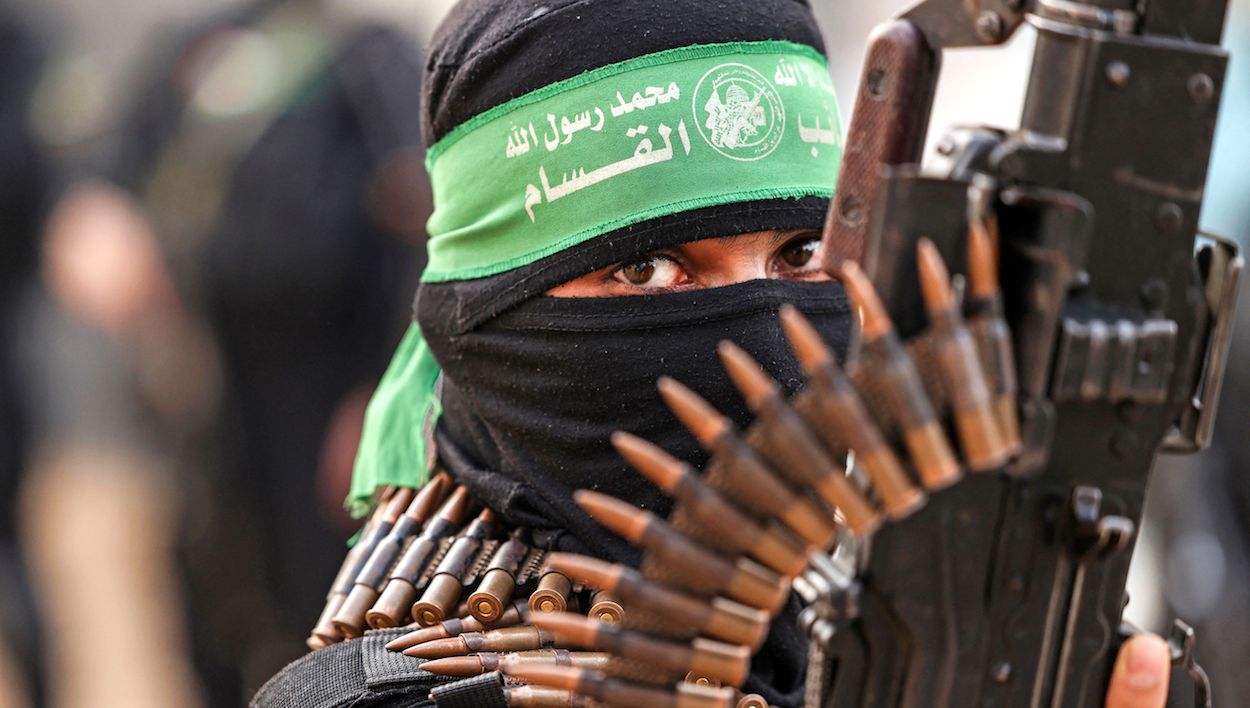Hamas’s attack was designed to massacre as many civilians as possible, while also striking at Israeli military posts along the Gaza border. Hamas knew that 7 October was going to be the biggest attack in its history, even if it didn’t know that it would be able to lay waste to 20 border communities, causing 50,000 to evacuate and leading to the deaths of 1,300. As the war grows and Iranian-backed groups begin to threaten a wider conflict, it’s worth looking at what might come next. To understand that we need to know how Hamas got to this point and what are its plans for the region.
If Israel gets bogged down fighting in Gaza City, Hezbollah may see this as an opening to strike in the north
The terror group was founded in the late 1980s during the First Intifada and has roots in the Muslim Brotherhood in Egypt. It has sought to blend religious extremism with Palestinian nationalism, to present an alternative to the more popular Palestinian groups that dominated from the 1950s to 1970s. Hamas rode a wave of religious extremism in the region in the 1990s and early 2000s, benefiting from the same winds that buffeted groups like Al-Qaeda. However, historically, Hamas was seen as having pretensions toward political power, even as it used suicide bombings and gun violence to kill Israeli civilians.
This changed in 2006 when it performed well in Palestinian elections and then fought a brief civil war with the rival Fatah party, murdering Fatah activists and taking over Gaza in a bloody coup. From that point on, Hamas has run Gaza as its own private dictatorship and mini-state. It has fought numerous wars with Israel, but was never able to succeed at any offensive operations. For instance, in 2014 it tried to send naval ‘commandos’ to raid a beach near Gaza and they were all hunted down. It tried to tunnel under Israel’s border fence and, with the exception of getting a few men through, it largely failed. Where it succeeded in the past was in developing long-range rockets with the backing of Iran. Israel checked this threat by developing better air defences.
In the past few years, Iran has encouraged Hamas, Hezbollah and other proxies that Iran backs to work more closely together. For instance, during the fighting between Israel and Hamas in 2021, there were rockets fired from Lebanon and drones launched from Iraq, two areas where Iranian-backed groups have bases. This year, Iran backed attacks on Israel from the West Bank and Hamas planned this massacre. Now Iran is warning Israel against invading Gaza. At the same time, Iran’s foreign minister met Hamas leader Ismail Haniyeh in Qatar. The next day, Hezbollah fired anti-tank rounds and rockets at Israel from Lebanon. The connection appears clear: Hamas carried out a massive attack on Israel to set the region ablaze. Iran wants an excuse to bring Hezbollah into the war. The US has sent two aircraft carriers to the Mediterranean to deter Iran.
For Israel, this presents a number of difficult scenarios. With more than 100 Israelis and many foreigners kidnapped to Gaza by Hamas, there is pressure on Israel to do something. Tens of thousands of Israelis are now homeless because they had to flee communities near Gaza; some of those communities have been destroyed. Hamas cannot be allowed to return to the border and constitute a threat after murdering a thousand people. However, Israel has preferred short wars in Gaza, destroying Hamas infrastructure but leaving the group intact in the past. If Israel gets bogged down fighting in Gaza City, Hezbollah may see this as an opening to strike in the north. Hezbollah has a massive arsenal of missiles and is considered far more powerful than Hamas. On the other hand, if Israel does not neutralise the Hamas threat, Hamas and Hezbollah can continue to deliver a kind of one-two punch whenever they want, heating up one border or another.
In the past, Israel preferred to dominate enemies using air power. Now it faces the prospect of a multi-front conflict where neither type of fighting is ideal. Unlike the US campaign against Isis in places like Mosul, Israel doesn’t have years to grind Hamas down in Gaza.






Comments